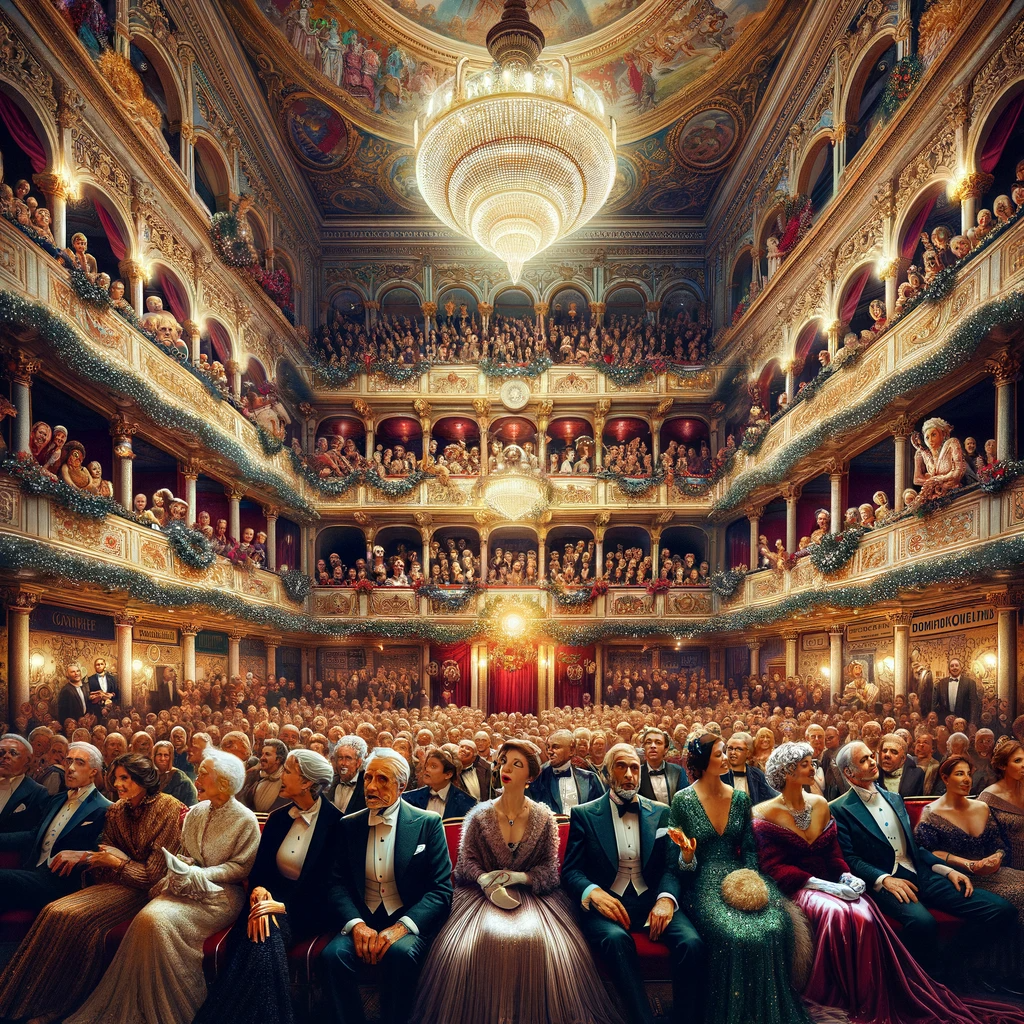
- Occasion: New Year’s Eve Concert
- Date and Time: December 31, 2023, at 9pm
- Location: Teatro Regio di Parma, Strada Garibaldi, 16 – Parma, Italy
- Operetta Title: “Al Cavallino Bianco”
- Composer: Ralph Benatzky
- Production Company: Corrado Abbati Company
- Director: Corrado Abbati
- Conductor: Alberto Orlandi leading the Arti&Suoni Philharmonic Orchestra
- Choreography: Francesco Frola
- Lead Roles:
- Antonella Degasperi
- Fabrizio Macciantelli
- Mariska Bordoni
- Davide Zaccherini
- Gaëtan Waterkeyn
- Carmine Fabbricatore
- Supporting Cast:
- Claudio Ferretti
- Chiara Presa
- Matteo Catalini
- Jana Szendiuchova
- Armando Ferro
- Sara Noveri
- Isabella Minosi
- Manuel Sandroni
- Giovanna Golin
- Lara Machado
- Dance Ensemble: Dancers from the Parma Ballet
- Contact Information:
- Website: Teatro Regio Parma
- Email: [email protected]
- Phone: +39 0521 218889
As the year draws to a close, the picturesque city of Parma, nestled in the heart of Italy, beckons travelers with a cultural feast that promises to ignite the senses. This New Year’s Eve, the historic Teatro Regio di Parma, an icon in the world of Italian opera, is set to host “Al Cavallino Bianco,” an operetta that weaves a tapestry of humor, romance, and melodious charm.
Parma: A City Where Culture and Gastronomy Meet
Designated a UNESCO Creative City of Gastronomy, Parma is not just a haven for food enthusiasts but also a vibrant center of Italian art and music. Its cobblestone streets, adorned with festive lights and decorations, create a magical backdrop for the holiday season, making it an idyllic destination for those seeking an authentic Italian experience.
Teatro Regio: The Jewel in Parma’s Crown
The Teatro Regio di Parma is not just a venue; it’s a testament to Italy’s rich operatic history. Renowned for its stunning architecture and exceptional acoustics, the theater stands as a beacon of Italian cultural heritage, inviting visitors to immerse themselves in a world where history and artistry collide.
“Al Cavallino Bianco”: A Musical Gem
This New Year’s Eve, the Teatro Regio di Parma will resonate with the melodies of “Al Cavallino Bianco,” a delightful operetta by Ralph Benatzky. Known for its lighthearted blend of spoken dialogue, songs, and dance, this operetta is a perfect introduction to the enchanting world of classical music and theatre. With its humorous plot and romantic themes, it’s a celebration of art that’s accessible to all.
A Stellar Cast and Production
Under the direction of Corrado Abbati and the baton of Alberto Orlandi leading the Arti&Suoni Philharmonic Orchestra, the production promises an unforgettable evening. The cast, including talents such as Antonella Degasperi and Fabrizio Macciantelli, alongside a skilled dance ensemble from the Parma Ballet, is set to bring this charming story to life.
Experience the Heart of Italian Opera
Visiting Parma for this operetta is more than just an evening at the theater; it’s a journey into the soul of Italian culture. The event symbolizes the cultural richness of Parma, showcasing a blend of classical music and contemporary theatrical production. It’s a significant cultural highlight, not only for the city but also for the entire region, expected to draw both local residents and international tourists.
Plan Your Visit
Parma is easily accessible by various modes of transportation, including train, bus, and car. As you plan your journey, consider the central location of Teatro Regio, situated at Strada Garibaldi, 16, a beacon in the city’s cultural landscape.
A New Year’s Eve to Remember
This event is not just a performance; it’s a celebration of art, culture, and the spirit of the holiday season. It offers a unique opportunity to experience a classic operetta in one of Italy’s most historic theaters. The combination of a talented cast, a professional orchestra, and the enchanting atmosphere of Teatro Regio makes this event a must-see for anyone interested in the arts.
As the curtain rises and the first notes fill the air, let the magic of “Al Cavallino Bianco” and the charm of Parma transport you into a world of theatrical wonder. This New Year’s Eve, be part of a tradition that continues to captivate and inspire. Book your tickets now and prepare to be swept away by the allure of operetta in the beautiful city of Parma.

